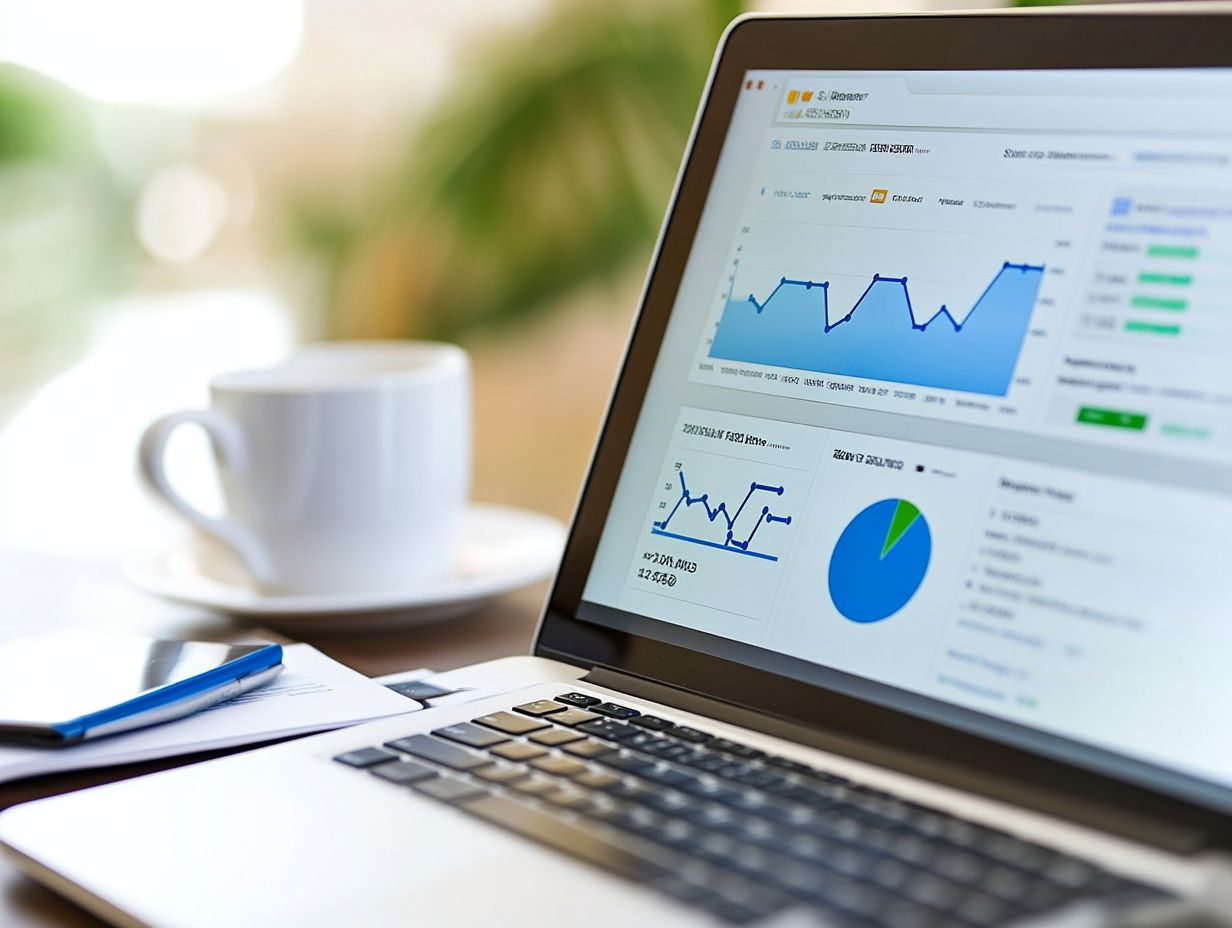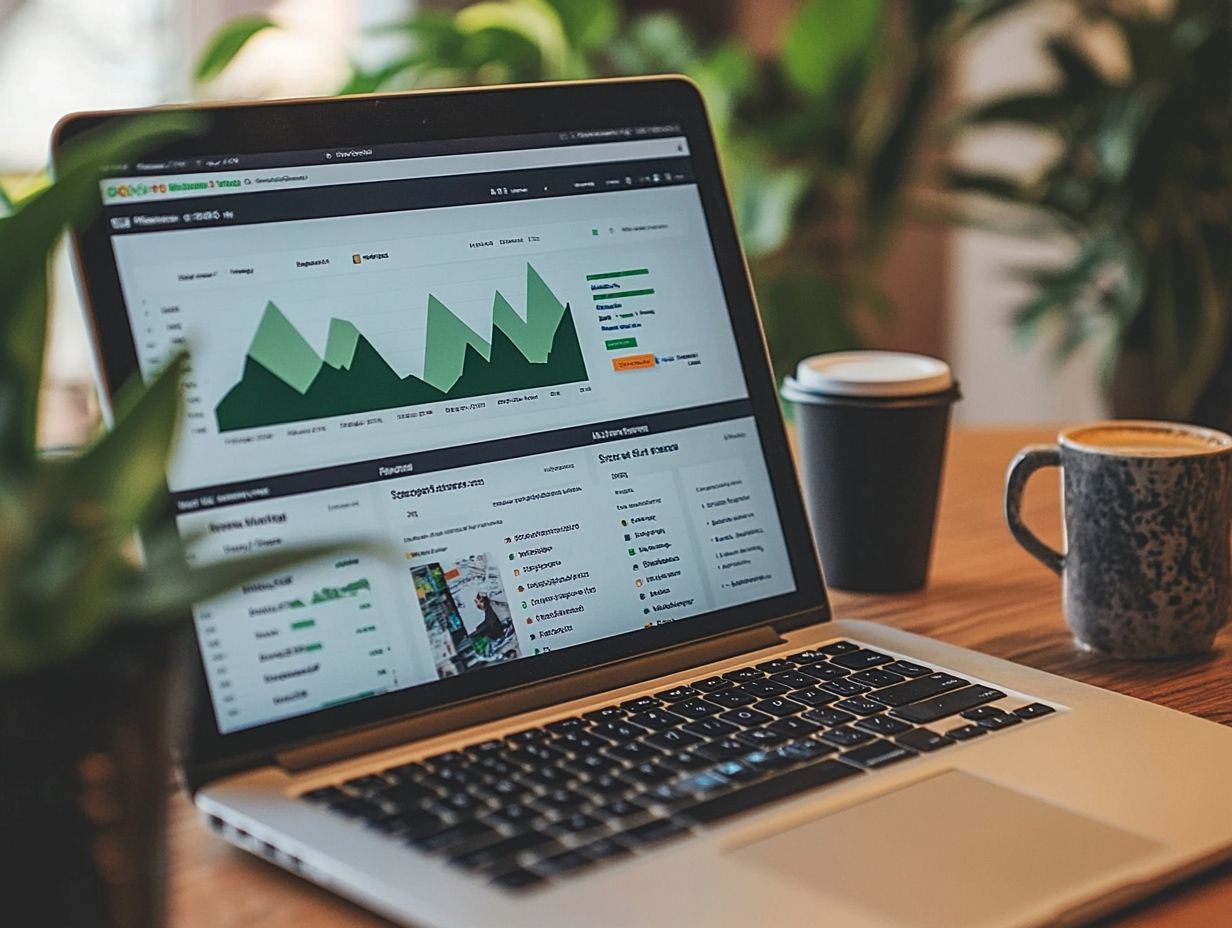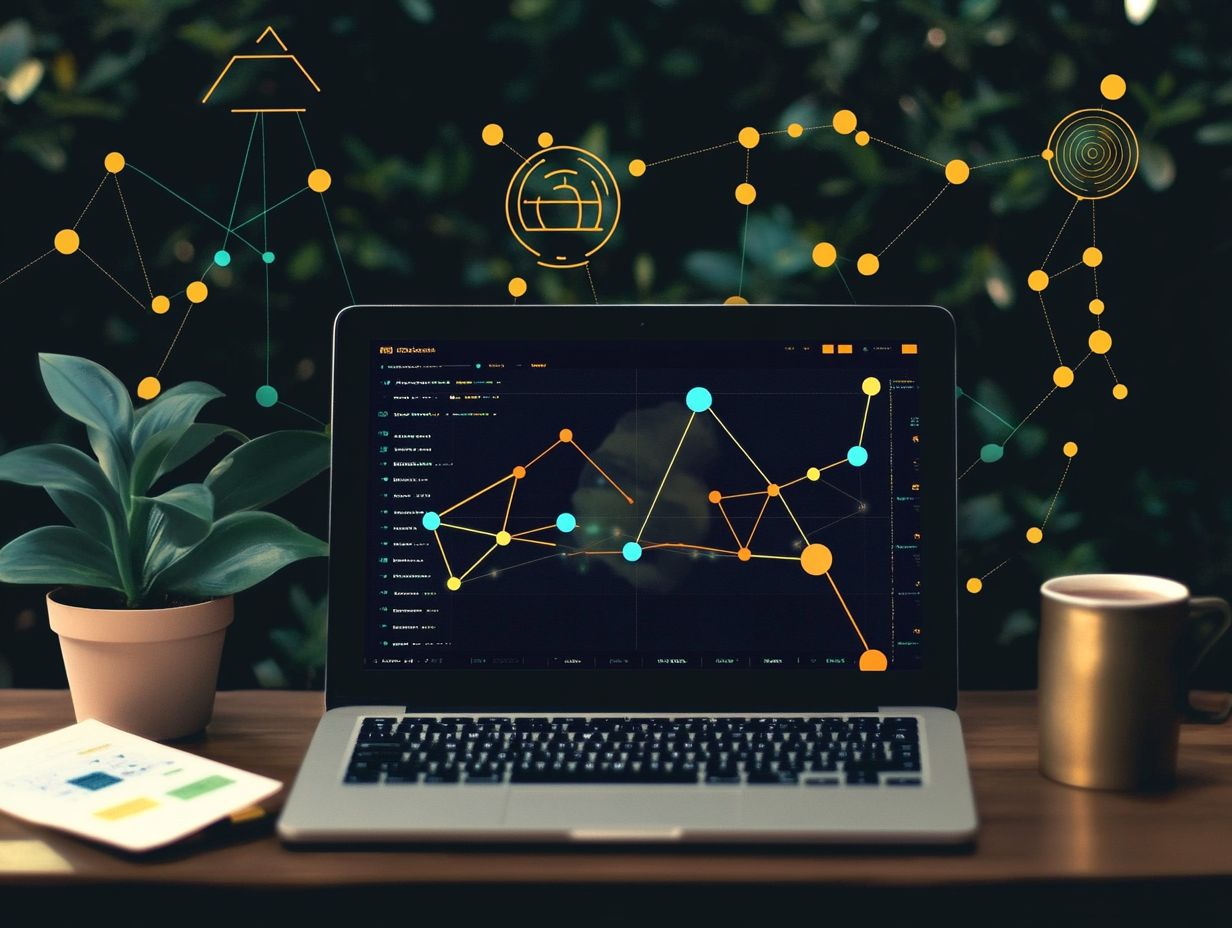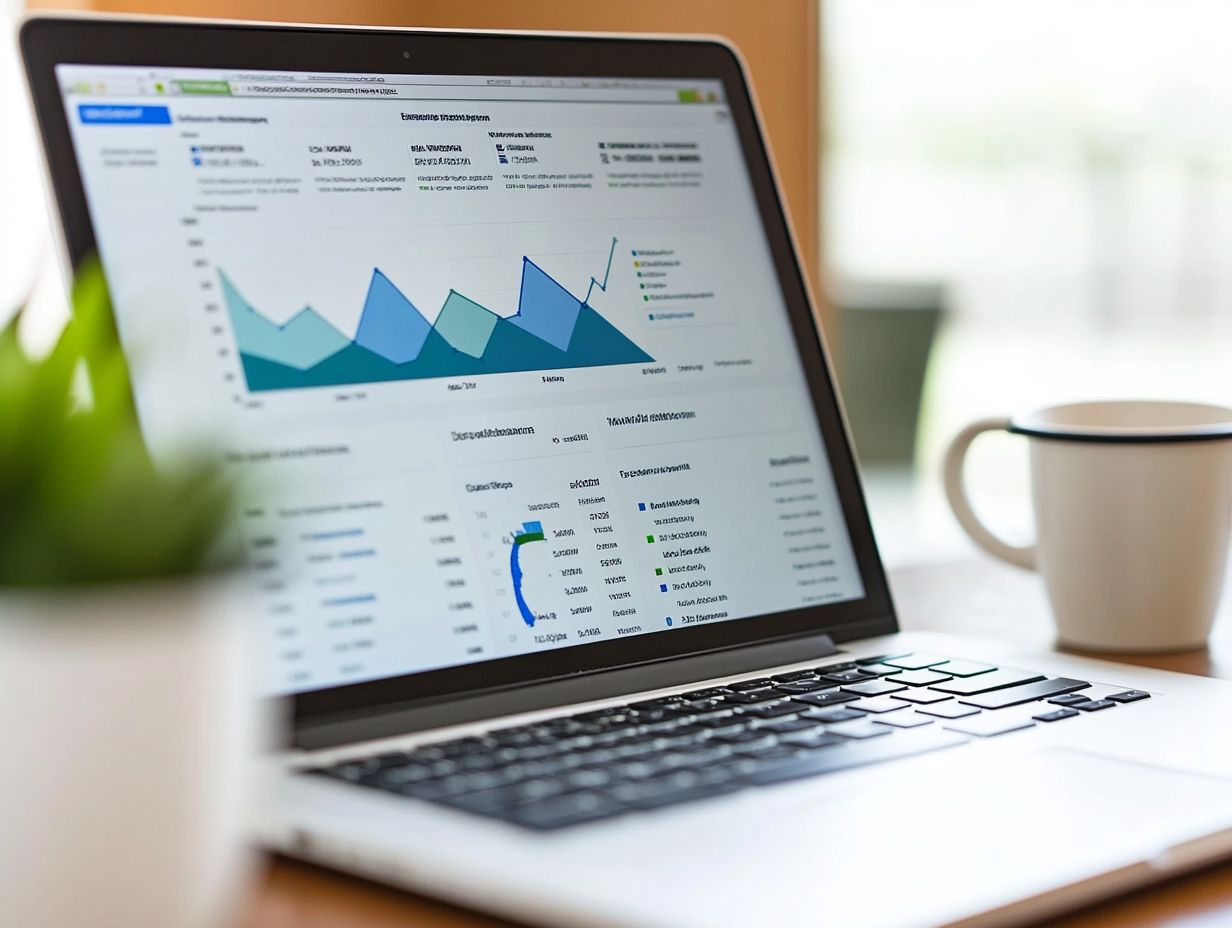On-page SEO plays a crucial role in boosting your website’s visibility on Google rankings. By mastering its core elements, such as keyword research and crafting effective title tags, you can greatly enhance your search rankings and improve organic traffic.
In this article, we delve into tactics for optimizing your content, refining meta descriptions, and accelerating site speed. We’ll also cover how mobile optimization and structured data can impact your SEO performance. By the end, you’ll be equipped with actionable insights to elevate your on-page SEO strategies and draw more organic traffic to your site.
What is On-Page SEO and why is it important for Google rankings?
On-Page SEO involves optimizing individual web pages to increase their search engine ranking and attract more relevant traffic. This includes strategies like optimizing meta tags, title tags, header tags, alt text, and internal linking to improve a webpage’s visibility and effectiveness. Ensuring mobile responsiveness and adherence to Google algorithms are also crucial components for effective optimization.
Understanding On-Page SEO is essential for digital marketing because it affects Google rankings and user engagement on your site. It also enhances user experience, ensures your content matches search intent, and aligns with technical SEO requirements like mobile usability and site speed.
The main elements of On-Page SEO cover technical aspects and the quality of the content. High-quality content, enhanced by keyword optimization and a logical URL structure, keeps visitors interested, leading them to spend more time on your site, which indicates to Google that the page is valuable.
A well-organized site structure aids search engines in crawling and understanding the connections between pages, boosting your optimization efforts. This includes paying attention to sitemap creation, robots.txt, and ensuring crawlability for better search engine visibility.
These ranking factors are connected; quality content with a logical structure and strategic keyword placement improves usability and can significantly improve a webpage’s search ranking, drawing an audience looking for valuable information. Incorporating FAQs and addressing user signals can further enhance user retention and engagement metrics.
What are the key elements of on-page SEO?
Key aspects of on-page SEO include using keywords effectively, creating well-designed meta tags, title tags, header tags, and adding alt attributes to images. Internal linking and schema markup significantly improve user experience and help search engines understand your content better. Ensuring content freshness through regular updates is also crucial for maintaining relevance.
Maintaining the right keyword density keeps your content relevant without seeming spammy, which can deter users and search engines. Establishing a clear content hierarchy with header tags (H1, H2, H3) makes navigation easier for readers and helps search engines understand the structure of the information. Optimizing for semantic search by using natural language processing enhances this structure.
Readability is important as well; using concise sentences and simple language makes content more accessible, encouraging longer visits and potentially increasing conversion rates. Implementing canonical tags can also prevent keyword cannibalization. Combining these elements creates a solid on-page SEO strategy that can enhance overall ranking performance.
How can keyword research improve your on-page SEO?
Keyword research is essential for effective on-page SEO because it identifies the terms and phrases your audience uses online. By understanding search intent and using long-tail keywords, you can improve keyword placement in your content, which increases content relevance and aligns your website with user searches. This strategy not only boosts visibility but also drives organic traffic to your site. Additionally, utilizing analytics tools for keyword analysis can refine your strategy further.
Effective keyword research involves a systematic approach using tools like Google Keyword Planner, SEMrush, and Ahrefs. These tools help you analyze search volume, competition, and trending topics, ensuring you select impactful keywords for your content. Evaluating competitor analysis can also highlight opportunities for content marketing and link building.
It’s important to align chosen keywords with user intent, as understanding whether the audience is looking for information, products, or services can greatly affect their engagement.
By following SEO best practices, using traffic analysis, and consistently optimizing content based on data, you can create a more tailored user experience that meets potential visitors’ needs. Incorporating social signals and ensuring HTTPS can further enhance trust factors and domain authority.
What role do title tags play in on-page SEO?
Title tags are a key part of on-page SEO, being one of the first things users see in search results. A well-optimized title tag captures attention and includes relevant keywords to improve search visibility. Effective title tags can increase click-through rates, leading to better user engagement, higher page authority, and improved SERP features.
To create engaging title tags, keep them concise—ideally 50-60 characters—while clearly describing the page’s content. Regular content updates and SEO audits can identify areas for improvement to keep title tags effective over time.
Avoid common mistakes such as:
- Keyword stuffing
- Using vague language
- Not differentiating titles for different pages, which can confuse users and search engines
By following these best practices, you can create title tags that stand out in a competitive digital space.
How to optimize meta descriptions for better click-through rates?
Optimizing meta descriptions is crucial for increasing click-through rates, as they provide a short summary of your webpage in search results. A strong meta description should include specific keywords and a clear call-to-action to encourage users to visit your website. Including social sharing options within your content can further boost engagement and visibility.
By focusing on the quality and relevance of content, you can boost user engagement and attract more organic traffic. Employing content diversification and voice search optimization can enhance your reach and adapt to evolving search behaviors.
Effective meta descriptions should be concise, usually between 150 to 160 characters, to ensure they are fully displayed in search results. Using active language can enhance user experience, encouraging potential visitors to act.
For example, phrases like ‘Discover tips for better living’ can attract users to explore further. Enhancing rich snippets with linked content can also make your descriptions more appealing. By focusing on these elements, you can achieve better visibility and create a more engaging online presence.
How does content quality affect on-page SEO rankings?
Content quality is key for on-page SEO rankings, as search engines favor high-quality, relevant content that satisfies user needs. Pages with fresh, informative content engage users, lower bounce rates, and increase dwell time, important factors that affect rankings. Therefore, focusing on content quality is essential for better visibility in search results and maintaining domain optimization.
To assess and improve content quality, analyze metrics like bounce rate and dwell time. A high bounce rate may indicate users aren’t finding what they expect, while longer dwell time suggests visitors are engaged and find the content valuable.
Using content distribution strategies and conducting regular SEO audits can identify areas for improvement, ensuring content connects with the target audience. By refining content based on these metrics, one can improve user experience and boost search engine performance.
What is the importance of header tags in on-page SEO?
Header tags are important for organizing your content and improving readability, making it easier for both users and search engines to understand. Using header tags correctly creates a clear content hierarchy, guides readers through your webpage, and allows for better keyword placement, which is crucial for semantic search optimization.
Header tags help create a clear layout and enhance your SEO practices. They signal the main topics and subtopics within your articles to search engines, ensuring the most important information stands out and allowing users to scan content efficiently. Effective use of header tags can also facilitate snippet generation and improve content hierarchy.
Implement header tags to reflect your content’s hierarchy: use H1 for the main title, H2 for subsections, and H3 for further divisions. This method not only benefits SEO but also improves the user experience, keeping visitors engaged with your content.
How can image optimization enhance on-page SEO?
Image optimization is an essential part of on-page SEO that can significantly improve both page speed and user experience. By optimizing images with techniques like using relevant alt text, image compression, and reducing file sizes, you enhance load times and help search engines understand the image context. Ensuring images are optimized for mobile-first indexing is also crucial for maintaining performance across devices.
This can boost visibility in search results, enhance site performance overall, and contribute to higher search engine results visibility and trustworthiness. Implementing video SEO can complement image optimization efforts, broadening your multimedia strategy.
Effective image optimization is important for technical SEO, as it ensures that all visual elements contribute to faster loading times and better user engagement. As search engines focus more on web vitals, which assess real-world user experience, optimizing images is crucial for maintaining good scores in these areas. Incorporating structured data can also improve search visibility and feature-rich snippets in search results.
Paying attention to responsive images and proper formatting can further reduce loading times on different devices, resulting in higher rankings and improved visitor retention. This aligns with ensuring your site meets mobile usability standards and enhances overall web performance.
A well-optimized image strategy not only meets technical standards but also enhances the site’s look and functionality. Incorporating audience insights and competitor benchmarking can further refine your content strategy and boost brand authority.
What is internal linking and how does it impact SEO?
Internal linking is an important SEO technique that connects pages within your website, aiding navigation and distributing link value effectively. This method improves site structure and keeps users interested by directing them to related content. Effective internal linking can greatly boost SEO by aiding in better indexing, enhancing site architecture, and increasing the visibility of key pages through strategic keyword matching.
To fully benefit from internal linking, consider the content hierarchy to create a logical flow between pages, ensuring users can easily find related information. Regular content promotions and leveraging content length strategically can further enhance this linking strategy.
- Choose appropriate anchor text that is descriptive yet concise, so visitors know what to expect when they click.
- Conduct regular SEO audits to find opportunities for optimizing internal links and improving content relevance and user behavior metrics.
By effectively linking relevant content, you can enhance user experience, increase session lengths, and ultimately boost search engine positions. This process also supports backlink strategies and audience targeting efforts.
How to improve page load speed for better on-page SEO?
Improving page load speed is crucial for on-page SEO because it directly impacts user experience and search engine rankings. A fast-loading website keeps users engaged, reduces bounce rates, and improves overall site performance.
Optimizing images, using browser caching, and reducing HTTP requests can significantly increase your page speed, enhancing your SEO efforts and Google rankings. Proper keyword optimization and the use of alt text for images further improve search visibility.
In today’s digital world, where users have short attention spans, providing a seamless browsing experience is key to retaining visitors and improving user engagement. To achieve this, adopt technical SEO practices such as compressing files, deferring non-essential JavaScript, and using Content Delivery Networks (CDNs) to improve load times, which affect user experience and bounce rate.
Web vitals, like Largest Contentful Paint (LCP) and First Input Delay (FID), offer important insights into site performance on mobile devices, crucial for mobile optimization and mobile responsiveness. Regular analytics and traffic analysis help identify issues and prioritize improvements, supporting a proactive approach to maintaining optimal site speed for both mobile and desktop users, enhancing site speed and user behavior.
What tools can help you analyze and improve your on-page SEO?
Using the right tools is essential for effective SEO audits and improving on-page SEO. Tools such as Google Search Console, analytics platforms, and SEO plugins help you monitor performance, find optimization opportunities, and analyze competitor strategies, factoring in Google algorithms and ranking factors.
These tools provide insights into your site’s strengths and weaknesses, guiding your on-page SEO efforts by highlighting areas for keyword placement, meta tags optimization, and improving content relevance.
Backlink checkers help you assess the quality and quantity of backlinks to your site, which is vital for building page authority and domain authority. Comprehensive keyword research tools aid in creating a strong content strategy, allowing marketers to produce relevant content for their audience and optimize for long-tail keywords, search intent, and semantic search.
Conversion rate optimization tools track user interactions and highlight areas for improvement, ensuring your on-page elements work together to increase natural traffic and conversions. This includes refining title tags, header tags, and structured data to improve engagement metrics and search engine visibility.




